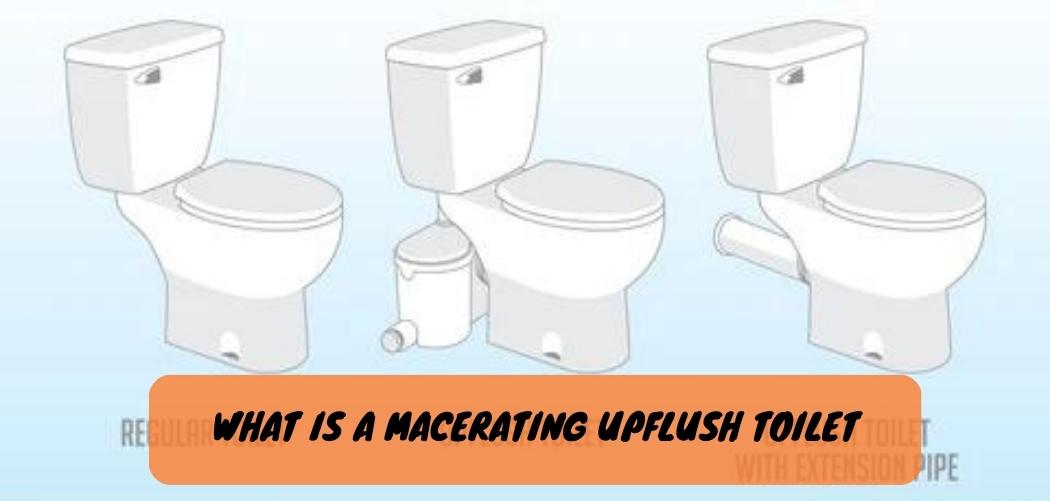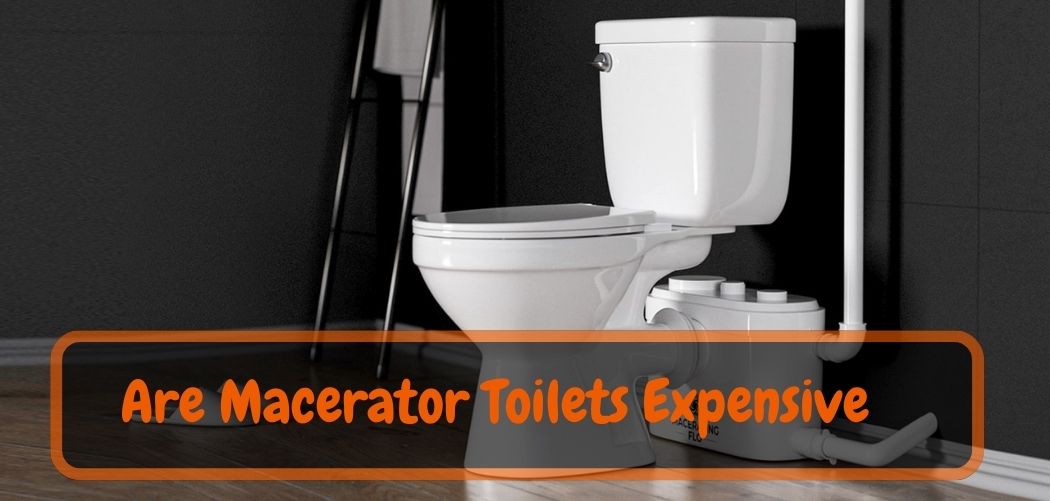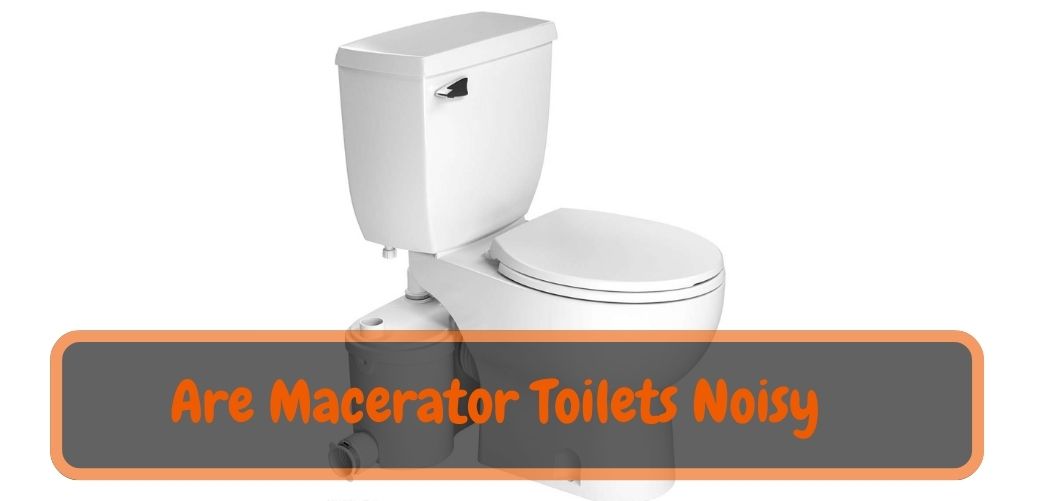If you’re in need of a toilet installation in a space where traditional plumbing is challenging, such as a basement or garage, a macerating upflush toilet can be an ideal solution.
This innovative type of toilet system offers unique benefits, installation flexibility, and cost-effective options.
In this comprehensive guide, we will explore what a macerating upflush toilet is, its benefits, installation guide, and overall cost, helping you make an informed decision for your plumbing needs.
What is a Macerating Upflush Toilet?
A macerating upflush toilet, also known as a macerating toilet or an upflush toilet, is a specialized toilet system that doesn’t rely on conventional plumbing for waste disposal.
Instead, it uses a macerating unit, which is a motorized device that grinds solid waste and toilet paper into a fine slurry, allowing it to be easily pumped up and away from the toilet via a small-diameter pipe.
This eliminates the need for traditional gravity-based drain lines and allows the toilet to be installed in locations where traditional plumbing would be difficult or costly, such as in basements, garages, or other areas below the main sewer line.
Benefits of Macerating Upflush Toilets
Macerating upflush toilets offer several benefits that make them an attractive option for certain plumbing scenarios. Some of the key advantages of macerating upflush toilets include:
Easy Installation:
Macerating upflush toilets are relatively easy to install compared to traditional toilets, as they don’t require major modifications to existing plumbing lines. They can be installed on any level of a building, and the waste can be pumped vertically and horizontally to reach the main sewer line.
Flexibility in Location:
One of the biggest advantages of macerating upflush toilets is their flexibility in location. They can be installed in spaces where conventional plumbing is not possible, such as basements, garages, or even in remote areas without access to a municipal sewer system.
Cost-Effective:
While macerating upflush toilets may have a slightly higher upfront cost compared to traditional toilets, the overall installation cost can be lower in certain scenarios. This is because they don’t require extensive plumbing modifications, which can save on labor and material costs.
Versatility:
Macerating upflush toilets can be used with different types of toilets, including standard toilets, wall-mounted toilets, and even urinals. This makes them a versatile option for various plumbing needs and configurations.
What are the Installation Requirements?
To install a macerating upflush toilet, you will need to have access to an electrical outlet and a water supply. You will also need to have a location for the toilet that is close to the macerator pump. This pump can be located behind the toilet or in the wall behind the toilet.
The toilet itself is similar to a traditional toilet, but it has a special bowl that is design to hold the waste and toilet paper until it is ready to macerate and pumped away.
Installation Guide for Macerating Upflush Toilets
Installing a macerating upflush toilet requires careful planning and following the manufacturer’s instructions. Here is a general installation guide for macerating upflush toilets:
1. Choose the Right Location:
Select a location for the macerating upflush toilet that is suitable for your needs and follows local plumbing codes. Consider factors such as the proximity to the main sewer line or septic tank, the availability of electrical and water supply, and the accessibility for maintenance.
2. Install the Macerating Unit:
Follow the manufacturer’s instructions to install the macerating unit. Typically, this involves connecting the macerating unit to the toilet bowl, electrical supply, and water supply. The macerating unit may also require venting to ensure proper air circulation and prevent odors. Make sure to follow all safety guidelines and local building codes.
3. Connect the Discharge Pipe:
Connect the discharge pipe from the macerating unit to the existing plumbing system or to the main sewer line. This may involve running the discharge pipe vertically or horizontally, depending on the specific installation requirements. It’s important to ensure that the discharge pipe is properly connected and securely sealed to prevent leaks.
4. Install the Toilet Fixtures:
Install the toilet bowl, tank, and seat as per the manufacturer’s instructions. Make sure to properly align and secure all connections, including the bolts, nuts, and wax ring, to ensure a watertight seal. Follow the recommended installation steps for the specific type of toilet fixture you are installing, whether it’s a standard toilet, wall-mounted toilet, or urinal.
5. Test and Adjust:
After installation, thoroughly test the macerating upflush toilet system to ensure proper functionality. Flush the toilet multiple times and check for any leaks or drainage issues. If necessary, make adjustments to the macerating unit, discharge pipe, or toilet fixtures to ensure optimal performance.
Overall Cost of Macerating Upflush Toilets
The overall cost of installing a macerating upflush toilet can vary depending on factors such as the brand and model of the macerating unit, the type of toilet fixture, labor costs in your area, and any additional materials or accessories needed for the installation.
In general, macerating upflush toilets may have a slightly higher upfront cost compared to traditional toilets due to the additional features and functionality they offer.
However, it’s important to consider the potential cost savings in terms of labor and materials, as macerating upflush toilets don’t require extensive modifications to existing plumbing lines.
Additionally, the flexibility in location and versatility of macerating upflush toilets can provide cost-effective solutions for challenging plumbing situations, such as in basements or remote areas without access to a municipal sewer system.
How do They Work?
A macerating upflush toilet uses a macerator pump to grind up waste and toilet paper into small pieces that can easily transport through small pipes. The waste is then pump through these pipes and into the home’s plumbing system, where it is Carrie away like any other type of waste.
What are the maintenance requirements?
A macerating upflush toilet requires regular maintenance to ensure that it continues to function properly. This includes cleaning the toilet bowl and checking the pump and pipes for any signs of damage or wear.
It is also important to avoid flushing anything other than human waste and toilet paper down the toilet, as other items can damage the macerator pump.
Saniflo How the Upflush System Works
Conclusion
A macerating upflush toilet is a versatile and efficient solution for challenging plumbing installations. With its unique features such as macerating technology, flexibility in location, and easy installation process, it offers several benefits for homeowners and contractors alike.
From providing options for basement bathrooms or remote areas without access to a municipal sewer system, to potential cost savings in labor and materials, macerating upflush toilets can be a practical choice for various plumbing needs.
When considering a macerating upflush toilet, it’s important to carefully follow the manufacturer’s instructions and local building codes to ensure a proper installation. Working with a professional plumber may also be beneficial to ensure the best results.
With its advantages in functionality, convenience, and cost-effectiveness, a macerating upflush toilet can be a reliable and efficient addition to any plumbing system.









